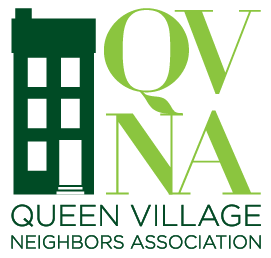Friends of Jefferson Square Park
Jefferson Square Park
Named after U.S. President Thomas Jefferson, Jefferson Square is a Classic 19th Century American Strolling Park. It was originally constructed in the early 19th century when the area was part of the Village of Southwark. The village and the park became part of the City of Philadelphia during the Great Consolidation Act of 1854, when all counties, boroughs and towns within Philadelphia County merged to become the City as we know it today.
During the Civil War the park was used by the Union Army as an encampment site. Afterwards the park was reconstructed using the Rittenhouse Square Park plans. The park’s granite retaining walls and pillars are identical to those installed at the same time in Rittenhouse Square.
The Park Through History
The current park is what remains of its post-Civil War reconstruction. The park was originally constructed in early 19th century had star-like patterned walkways. During the Civil War, like other squares in Philadelphia, Jefferson Square Park was renamed Camp Jefferson and was deeded to the Union Army for use as an encampment site and parade grounds. The Square’s close location to the ports, the “refreshment saloons” and military hospitals made it an ideal location for military use. Advertisements in the Philadelphia Inquirer during the Civil War welcomed area residents to Camp Jefferson, particularly young men inclined to enlist, to see the daily displays of military weaponry and watch the performances of marching soldiers and bands.
Following the Civil War the park was re-deeded back to the City of Philadelphia. The City adopted a restoration plan for many of its parks previously used by the military. This plan called for a new classic style of park, known as strolling parks, which were designed solely for passive use activities like strolling, reading, etc. This design was especially desirable for squares and parks in urban areas were surrounded by homes with little or no yards or gardens. It enabled area residents to simply walk from their homes to a park for an enjoyable, relaxing time outdoors. This was believed to promote good mental and physical health. These classic park designs called for inviting entrances, walkways that were wide enough for two passing couples, a center “destination point” that was a circle or square with a statue or fountain, and ample benches and lighting. Jefferson Square Park, like other parks in Philadelphia such as Rittenhouse Square and Washington Square, were all reconstructed in the 1870’s using this design. Jefferson Square Park’s current walkway pattern, granite retaining walls and entrance pillars date to this 1870’s restoration. Early photographs of the park show that cast iron urns once decorated the top of all 16 entrance pillars at the park’s eight entrances. An 18th century Inquirer article, describing an explosion across the street from the park at the Merck & Company iron foundry (now Sacks Playground), notes that Jefferson Square Park’s decorative iron fencing was partially destroyed by the blast, evidencing that the park once had cast iron perimeter fencing. Cast iron urns and iron fencing were removed by the City from many parks for scrap iron drives in World War I and II. Photographs of Jefferson Square Park before World War II show the pillars with their urns. Photos after that war show the pillars with the urns gone. It is not certain when the fencing was removed.
Get Involved!
Upcoming Cleanups at Jefferson Square Park (usually 2nd Saturday of each month, 9–11am)
April 6
May 11
June 8
July 13
August 10
September 14
October 12
November 9
December 14
Impromptu Volunteer Hours (select Thursday mornings, 8-9am)
Next date: March 28, 8-9am
For more details on upcoming events, check out the Friends of Jefferson Square Park website and the QVNA event calendar!


